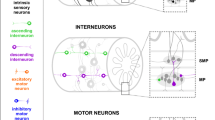Abstract
Taste receptors and their downstream signaling molecules are activated by sugars and sweeteners in the gut and participate in the regulation of glucose transport into enterocytes. The glucose transporter families GLUT and SGLT are responsible for the absorption of glucose, GLUT4 and SGLT1 being expressed preferentially in T1R3-positive taste cells. However, the expression patterns of the other glucose transporters in mouse gustatory tissues have not yet been elucidated. Therefore, we have examined the expression patterns of the glucose transporters (GLUT1-4 and SGLT1-3) in mouse gustatory tissues. Reverse transcription/polymerase chain reaction assays have revealed that GLUT1, 3, and 4 and SGLT1 mRNAs are expressed in the circumvallate papillae. Immunohistochemical analysis has shown that SGLT1 is expressed in a subset of the epithelial cells: from the basal cell layer to the prickle cell layer and in intragemmal and extragemmal epithelium cells in the circumvallate, foliate, and fungiform papillae. GLUT1, GLUT3, and GLUT4 are expressed in the prickle cell layers and/or basal cell layers in these papillae. Moreover, GLUT1, but not GLUT3 or GLUT4, is expressed in a subset of intragemmal and extragemmal epithelium cells in these papillae. Double-labeling experiments have demonstrated that GLUT1-positive taste bud cells coexpress gustducin and inositol 1,4,5-triphosphate receptor type III. These results suggest that SGLT1 and GLUT1 play a role in glucose-sensing and/or transport in mouse taste buds.







Similar content being viewed by others
References
Asano T, Katagiri H, Takata K, Lin JL, Ishihara H, Inukai K, Tsukuda K, Kikuchi M, Hirano H, Yazaki Y, Oka Y (1991) The role of N-glycosylation of GLUT1 for glucose transport activity. J Biol Chem 266:24632–24636
Balen D, Ljubojević M, Breljak D, Brzica H, Žlender V, Koepsell H, Sabolić I (2008) Revised immunolocalization of the Na+-D-glucose cotransporter SGLT1 in rat organs with an improved antibody. Am J Physiol Cell Physiol 295:C475–C489
Burry RW (2000) Specificity controls for immunocytochemical methods. J Histochem Cytochem 48:163–166
Chandrashekar J, Hoon MA, Ryba NJ, Zuker CS (2006) The receptors and cells for mammalian taste. Nature 444:288–294
Chaudhari N, Roper SD (2010) The cell biology of taste. J Cell Biol 190:285–296
Clancy BM, Czech MP (1990) Hexose transport stimulation and membrane redistribution of glucose transporter isoforms in response to cholera toxin, dibutyryl cyclic AMP, and insulin in 3T3-L1 adipocytes. J Biol Chem 265:12434–12443
Clapp TR, Stone LM, Margolskee RF, Kinnamon SC (2001) Immunocytochemical evidence for co-expression of type III IP3 receptor with signaling components of bitter taste transduction. BMC Neurosci 2:6
Clapp TR, Yang R, Stoick CL, Kinnamon SC, Kinnamon JC (2004) Morphologic characterization of rat taste receptor cells that express components of the phospholipase C signaling pathway. J Comp Neurol 468:311–321
Cummings DE, Overduin J (2007) Gastrointestinal regulation of food intake. J Clin Invest 117:13–23
Damak S, Rong M, Yasumatsu K, Kokrashvili Z, Varadarajan V, Zou S, Jiang P, Ninomiya Y, Margolskee RF (2003) Detection of sweet and umami taste in the absence of taste receptor T1r3. Science 301:850–853
Delay ER, Hernandez NP, Bromley K, Margolskee RF (2006) Sucrose and monosodium glutamate taste thresholds and discrimination ability of T1R3 knockout mice. Chem senses 31:351–357
Diez-Sampedro A, Hirayama BA, Osswald C, Gorboulev V, Baumgarten K, Volk C, Wright EM, Koepsell H (2003) A glucose sensor hiding in a family of transporters. Proc Natl Acad Sci USA 100:11753–11758
Gherzi R, Melioli G, De Luca M, D'Agostino A, Guastella M, Traverso CE, D'Anna F, Franzi AT, Cancedda R (1991) High expression levels of the "erythroid/brain" type glucose transporter (GLUT1) in the basal cells of human eye conjunctiva and oral mucosa reconstituted in culture. Exp Cell Res 195:230–236
Heilig C, Zaloga C, Lee M, Zhao X, Riser B, Brosius F, Cortes P (1995) Immunogold localization of high-affinity glucose transporter isoforms in normal rat kidney. Lab Invest 73:674–684
Kuroki S, Yokoo S, Terashi H, Hasegawa M, Komori T (2009) Epithelialization in oral mucous wound healing in terms of energy metabolism. Kobe J Med Sci 55:E5–E15
Mace OJ, Affleck JA, Patel N, Kellett GL (2007) Sweet taste receptors in rat small intestine stimulate glucose absorption through apical GLUT2. J Physiol (Lond) 582:379–392
Margolskee RF, Dyer J, Kokrashvili Z, Salmon KS, Ilegems E, Daly K, Maillet EL, Ninomiya Y, Mosinger B, Shirazi-Beechey SP (2007) T1R3 and gustducin in gut sense sugars to regulate expression of Na+-glucose cotransporter 1. Proc Natl Acad Sci USA 104:15075–15080
Miyoshi MA, Abe K, Emori Y (2001) IP3 receptor type 3 and PLCβ2 are co-expressed with taste receptors T1R and T2R in rat taste bud cells. Chem Senses 26:259–265
Roper SD (2007) Signal transduction and information processing in mammalian taste buds. Pflügers Arch 454:759–776
Sternini C, Anselmi L, Rozengurt E (2008) Enteroendocrine cells: a site of “taste” in gastrointestinal chemosensing. Curr Opin Endocrinol Diabetes Obes 15:73–78
Thorens B, Mueckler M (2010) Glucose transporters in the 21st Century. Am J Physiol Endocrinol Metab 298:E141–E145
Wright EM, Hirayama BA, Loo DF (2007) Active sugar transport in health and disease. J Intern Med 261:32–43
Yang R, Tabata S, Crowley HH, Margolskee RF, Kinnamon JC (2000) Ultrastructural localization of gustducin immunoreactivity in microvilli of type II taste cells in the rat. J Comp Neurol 425:139–151
Yee KK, Sukumaran SK, Kotha R, Gilbertson TA, Margolskee RF (2011) Glucose transporters and ATP-gated K+ (KATP) metabolic sensors are present in type 1 taste receptor 3 (T1r3)-expressing taste cells. Proc Natl Acad Sci USA 108:5431–5436
Zhao FQ, Keating AF (2007) Functional properties and genomics of glucose transporters. Curr Genomics 8:113–128
Author information
Authors and Affiliations
Corresponding author
Additional information
This study was supported in part by a research grant from the Society for Research on Umami Taste.
Rights and permissions
About this article
Cite this article
Toyono, T., Seta, Y., Kataoka, S. et al. Differential expression of the glucose transporters in mouse gustatory papillae. Cell Tissue Res 345, 243–252 (2011). https://doi.org/10.1007/s00441-011-1210-x
Received:
Accepted:
Published:
Issue Date:
DOI: https://doi.org/10.1007/s00441-011-1210-x




